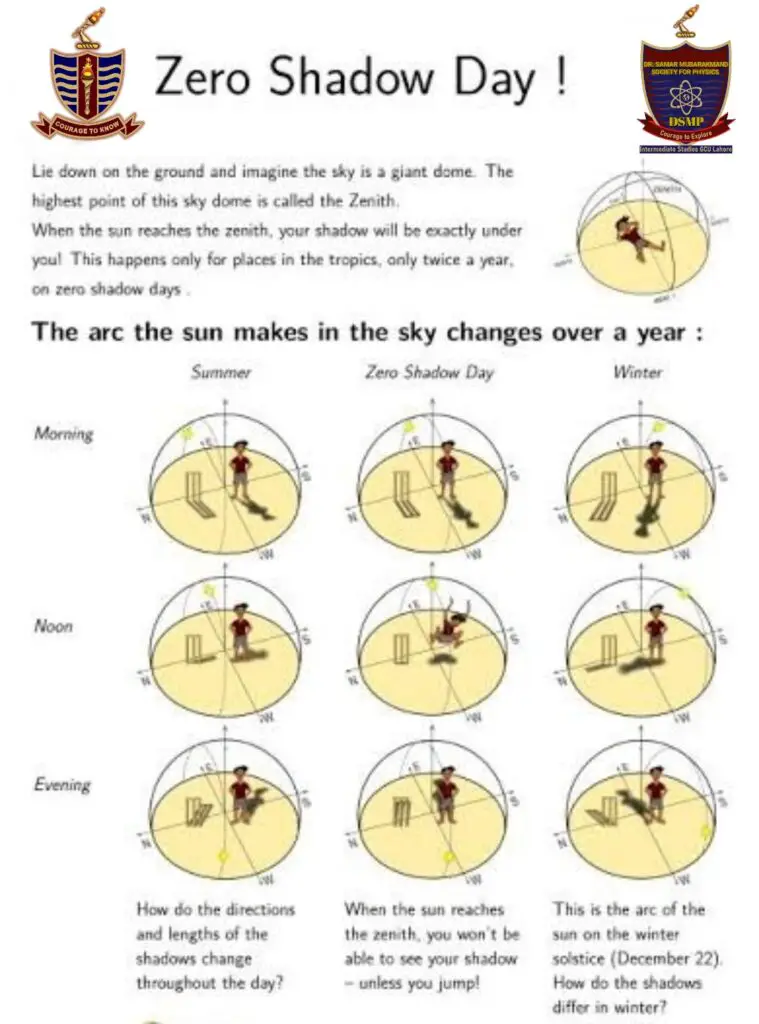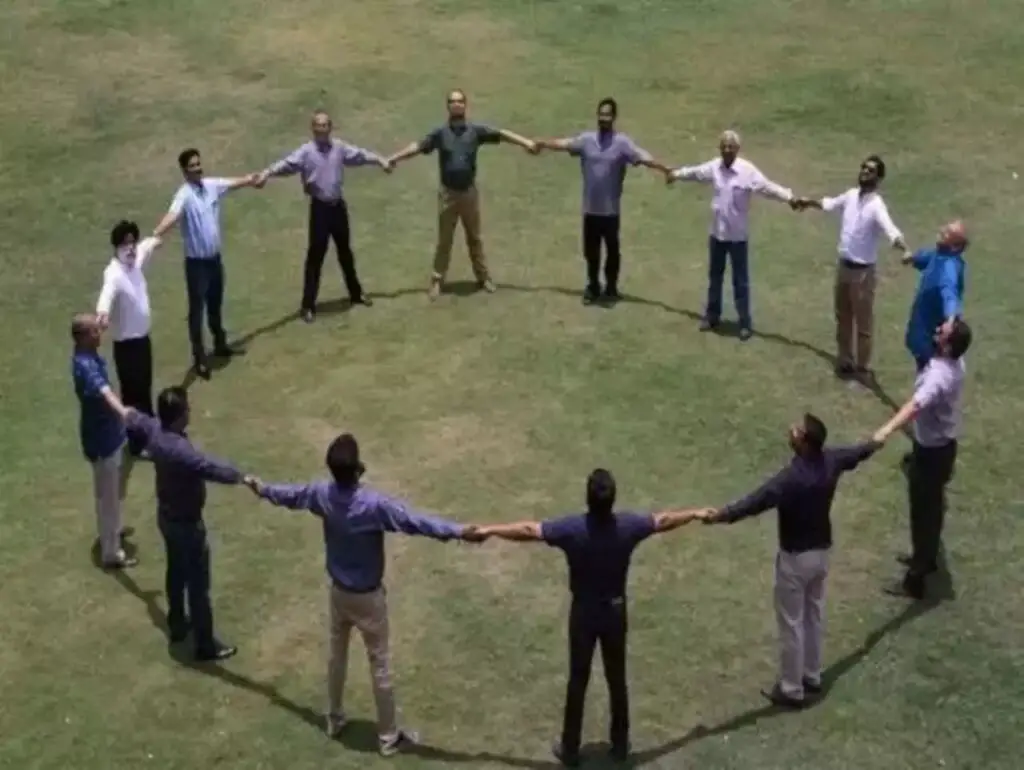What is Zero Shadow Day:
Have you ever experienced a moment when objects cast no shadows? A phenomenon known as “Zero Shadow Day” offers this captivating spectacle, a dance between the Sun and Earth that results in a unique occurrence of light and shadow. In this article, we delve into the fascinating concept of Zero Shadow Day, its celestial mechanics, and why you should mark your calendar to witness this extraordinary event.
Table of Contents

Nainital, Ramesh Chandra Zero Shadow Day 2023 in India:
It means a day with zero shadow when the shadow of a person or object disappears for a moment due to direct sunlight. At that time the sun is just above the latitude line. Friday will be a day of zero shade in some parts of South India.
This situation arises due to the tilt of the earth on its axis.
Due to the tilt of the earth on its axis by 23.5 degrees, the condition of zero shadow day is created. This is also the reason for the change of seasons. Geographically, the earth has been marked in three important lines, which are the equator, the Tropic of Capricorn and the Tropic of Cancer. Saturn opposition on 27th and second supermoon of the month on 31st August
There will be a golden opportunity to see Shani on 27th August. In this astronomical event, Saturn will reach closest to the Earth and will be seen shining like a golden star.
Understanding Zero Shadow Day
As the name implies, is a day when an object on the Earth’s surface casts no visible shadow. This phenomenon occurs when the Sun is directly overhead or very close to being directly overhead. The resulting lack of shadows creates a surreal environment that has intrigued scientists, photographers, and curious minds for centuries.

The Science Behind Zero Shadow Day
The Earth’s Tilted Axis
The Earth’s axial tilt is a crucial factor in the occurrence of Zero Shadow Day. Due to this tilt, the Sun’s rays hit different parts of the Earth’s surface at varying angles throughout the year. During the equinoxes, which mark the transition between seasons, the Sun is positioned directly above the equator. This alignment leads to the absence of shadows, creating the mesmerizing phenomenon we call Zero Shadow Day.
The Equator’s Role
Regions near the equator experience more frequently than those closer to the poles. This is because the equator is perpendicular to the Sun’s rays during the equinoxes, resulting in the shortest and almost non-existent shadows. As one moves away from the equator, the angle at which sunlight strikes the surface becomes more slanted, leading to longer and more distinct shadows.
Zero Shadow Day Around the World
The frequency of Zero Shadow Day varies across the globe. Near the equator, countries like Ecuador, Kenya, and Indonesia witness this phenomenon multiple times a year. On the other hand, locations far from the equator, such as Scandinavia, might experience it only during specific periods. It’s a celestial dance that reminds us of Earth’s intricate relationship with the Sun.
The Cultural Significance
It holds cultural and spiritual significance in many societies. In some cultures, it marks the onset of harvest seasons or symbolizes the balance between light and dark. Festivals and rituals are often centered around this event, emphasizing the connection between human life and the cosmic order.
How to Experience Zero Shadow Day
To witness the enchanting sight of Zero Shadow Day, careful planning is essential.
Choosing the Right Location
Select a location close to the equator for the highest chances of experiencing this phenomenon. Countries like India, Mexico, and Uganda offer excellent opportunities for observation. Research the specific dates when it occurs in your chosen destination.
Optimal Times for Observation
It usually occurs around solar noon, when the Sun is at its zenith. This is the time when shadows are shortest or completely absent. It’s a fleeting moment, so be prepared to capture the magic as it unfolds.
Photography Opportunities
Capturing Illusionary Images
Photographers find Zero Shadow Day to be a playground of creative possibilities. Objects appear to float and defy gravity without their usual shadows anchoring them to the ground. Experiment with perspective and composition to create captivating and surreal visuals.
Sharing the Phenomenon
In today’s digital age, witnessing is not limited to being physically present. Photographers and enthusiasts share their images and experiences on social media platforms, allowing others to marvel at this celestial dance from around the world.
The Wonder of Nature
Inspiring Art and Creativity
The spectacle of Zero Shadow Day has inspired artists, writers, and thinkers for generations. The play of light and absence of shadows evoke a sense of wonder that has translated into countless creative expressions, from paintings to poetry.
Zero Shadow Day in Literature
Writers often use Zero Shadow Day as a metaphor for fleeting moments of perfection or the convergence of opposing forces. This celestial event serves as a rich source of symbolism in literature, exploring themes of unity, balance, and the passage of time.
Frequently Asked Questions
- What causes Zero Shadow Day?
It occurs when the Sun is directly overhead or near the zenith, resulting in minimal to no visible shadows. - Is Zero Shadow Day the same everywhere on Earth?
No, the frequency and occurrence of Zero Shadow Day depend on a location’s proximity to the equator. - Can I experience this phenomenon at any time of the year?
It typically occurs during the equinoxes, around the time of the transition between seasons. - How do cultures celebrate Zero Shadow Day?
Many cultures mark this event with festivals, rituals, and celebrations that highlight the significance of light and shadow. - Are there any safety precautions for observing this event?
While there are no specific safety concerns, it’s important to protect your eyes and skin from prolonged exposure to the Sun.
In conclusion, it is a celestial phenomenon that offers a glimpse into the intricate relationship between the Sun, Earth, and human culture. Its captivating play of light and shadow serves as a reminder of the beauty and wonder that surround us in the natural world. Whether you choose to witness it firsthand or explore it through the eyes of others, this extraordinary event is a testament to the awe-inspiring forces that shape our planet and our lives.
To read more other blog:https://astron-soc.in/outreach/activities/zero-shadow-day/
To know more kindly visit our other blog:https://spotnews2023.com/index.php/2023/08/17/ice-apple/


